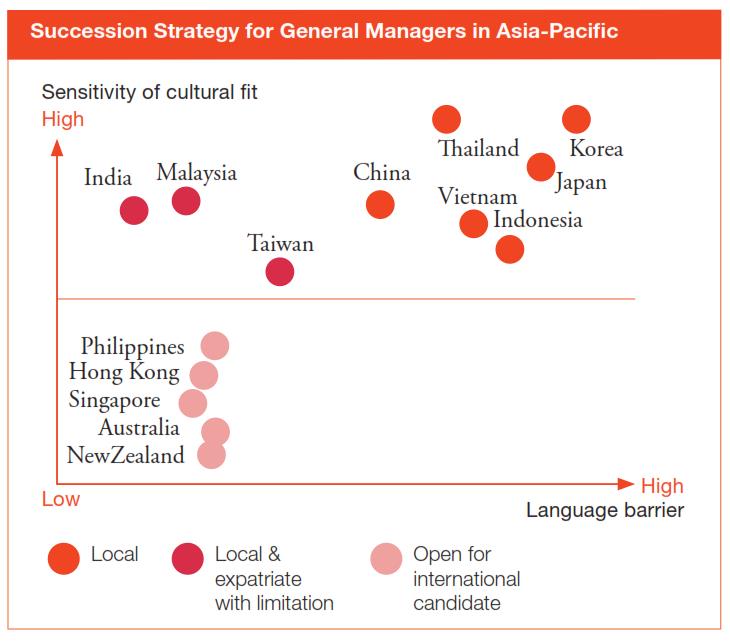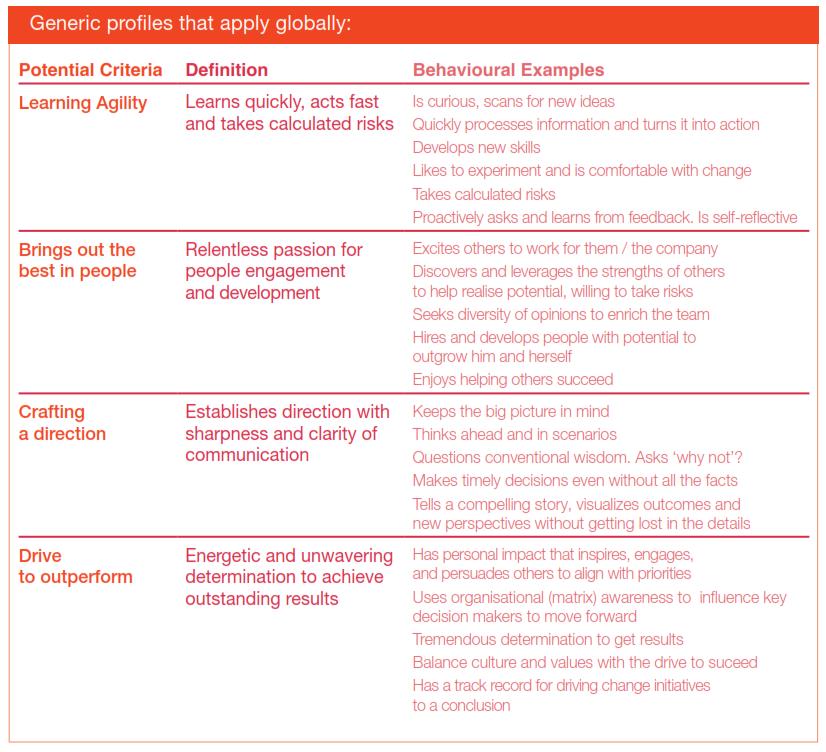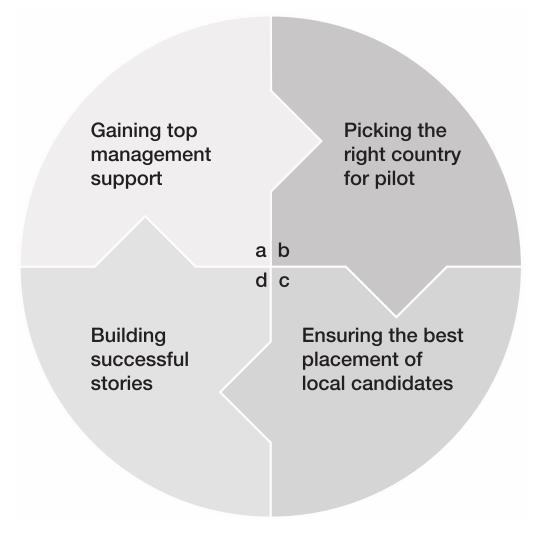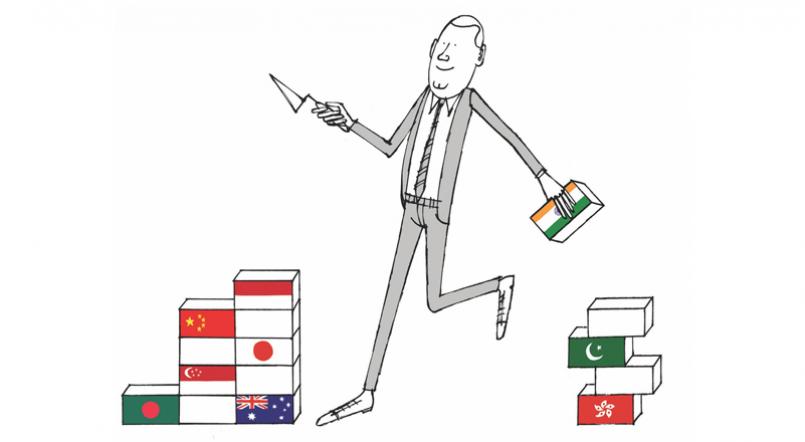Prior to 2005, 90% of Hilti Asia’s top management (Country General Managers (GM) and local management team) were expatriates from the US and Europe. In 2003, the company began to adopt a more decentralised approach. Then, between 2005 and 2007, Hilti Asia introduced a different leadership model in the region. The company consolidated its support functions for the region in the Asia Regional Office based in Hong Kong.
By 2010, 68% of Hilti’s senior management were Asian nationals, and 90% of its Country General Managers were local talent. Soon after the restructuring, Hilti experienced significant turnaround in its businesses in Korea, India, China and Southeast Asia. The company strongly believes that the employment of local leaders has been a key factor in driving robust business development over the last few years.
Localisation: A Personal Experience
In 1998, I was appointed as the expatriate General Manager for Hilti, and was responsible for the company’s operations in Hungary.
At my first meeting with the management team there, I needed one of my sales managers to translate my address to the staff. After giving what I thought was a rousing, passionate speech in English, I was embarrassed by the muted response. I realised later that much was lost in translation.
My assignment in Hungary turned out to be more challenging than expected. Implementing changes ended up taking more time and effort. I learnt through this experience that team engagement is a key ingredient for success, and that culture and communication play very important roles in this regard.
The soundest strategies cannot work without proper execution. This is where leadership and people are critical. It was this lesson that got me thinking about how difficult it is to transfer qualities like leadership as well as social and communication skills across cultural borders, and what this means for management performance.
I encountered a similar situation seven years later, during my first few meetings in China, Japan and Korea. Seeing how the expatriate management struggled to communicate in these meetings brought back memories of my experience in Hungary. This was the moment when my first ideas of management localisation for Asia crystallised. Hilti’s localisation initiative in Asia can be divided into four stages:
1. Establishing Basic Operating Principles
2. Formulating Localisation Model
3. Execution and Change Management Tactics
4. Making it Sustainable
Stage 1: Establishing Basic Operating Principles
The principles that guide the localisation initiatives in Hilti are: “Who first and then what?”
Hilti is a B2B company with a direct selling model. Two thirds of its employees are in functions that have direct customer interfaces, while Hilti has 200,000 customer contacts per day worldwide.
The quality of those contacts has a significant business impact, and is determined by the skills and attitude of employees. Having the right leadership makes a crucial difference in keeping staff motivated, resulting in customer loyalty and sustained business results. My personal mantra has been, “once we have the right leaders in place, everything else will fall into place”.
“Culture counts” In the past, Hilti managed international talent assignments based on the belief that there is a homogeneous standard in measuring and assessing talent. If someone demonstrated strong potential, capability and results, then this person should be able to repeat success across geographical boundaries.
Hilti started revisiting this leadership model in Asia in 2005 after I became Regional President. We began to pay more attention to crosscultural issues and the impact this had on the success rate of international assignments. The cultural impact on behaviour, communication and overall working style was substantiated by Geert Hofstede’s research, which showed that cultural differences in the workplace, perceptions of authority, individualism and views of time, have significant influence on the effectiveness of leadership.
Stage 2: Formulating the Localisation Model
A cluster model Equipped with this appreciation for cultural differences, Hilti clustered Asia Pacific markets into two categories: For markets with a high degree of cultural uniqueness and sensitivity, and low degree of English language proficiency, Hilti would place local leaders there. For markets that are more multi-cultural, where English is a common business language, Hilti would be open to international candidates.

Succession strategy for general managers in Asia-Pacific
Asian leadership profile
Clearly defined and formulated leadership profiles form the basis for successful selection and development of executive talents. Hilti defines its Asian leadership profile as follows:
- Ability to manage diversity and operate under a cross-cultural environment
- Ability to coach and develop next-generation managers
- Integrity

Generic profiles that apply globally
Stage 3: Execution and Change Management Tactics
Once the localisation strategy was formulated, the challenge of implementation and change began. How should Hilti Asia manage the change from a set up where 90% of top positions were held by expatriates to one where 90% of senior management positions would be assigned to local talents? Steady growth during the period also reinforced the “if it ain’t broke, don’t fix it” mentality among staff.
We adopted a simple but effective tactic.

a) Gaining top management support by planting the idea in people’s minds
Localisation is a very sensitive topic, especially when the expatriate model seems to be working. To sell the idea and gain support from senior management within the company, I was looking not only for factual arguments but also to confront their prejudices and presumptions. I presented to the European board members a hypothetical situation of having a Korean GM manage the Milan business. This hypothetical GM had no experience in Europe and did not speak Italian – would they be able to run a successful business? The board immediately saw that such an approach would not work. I then turned the tables and asked why then the same approach should work any better in Asia. The doors for localisation were soon open.
b) Picking the right countries for the pilot
In order to convince the organisation that localisation would work, success stories were needed. It was best to start with a smaller country with less associated risk, so the Philippines was selected.
The company decided to go ahead as the risk was manageable and the need for management change was present as well.
c) Ensuring the best placement of local candidates
Nationality is not a qualification. Apart from having the right cultural background, fundamental potential and capability are also critical. In addition, failure rates of external hires at very senior levels are high (most organisations experience only a 50/50 success rate). Therefore, maintaining a constant flow of local talent in the management development pipeline is critical.
d) Building successful stories
Success stories are needed to drive full localisation in Asia. Even if the right pilot countries are picked and the best candidates selected, good business results are still ultimately required. The localisation process in Hilti Asia gained momentum, with visible successes in Korea and the Philippines. These early successes gave the organisation confidence to start a fullscale localisation process.
Stage 4: Making it Sustainable
Localisation can be a long and bumpy journey. It is common for a company going through localisation to switch back to relying on expatriate management. The following are key factors in making the localisation effort sustainable and having a positive impact on business:
“To manage the fear of the unknown”
Organisations must accept that local talents may behave differently from the Western standard, and that simply hiring local faces that conform to West-ern expectations may not work either. It is better to give local talent exposure and the experience of interacting in a Western multinational organisation and, on the other hand, having people in headquarters understand how the other culture works.
“A constant flow of local talent in the development pipeline is required” Localisation is a top management succession and replacement strategy. It is not static, especially in Asia. Hilti has built a pipeline to ensure a constant flow of local talent.
80/20 Rule
Twenty percent of talent at each level should have the prospect of being promoted one or two levels up. For younger local talents who have potential to be future leaders, Hilti provides job assignments in Europe and US to provide them with the international experience they need to succeed. For more senior positions, like GM, Hilti has established a ‘feeder role’ system. Hilti reserves GM roles in smaller markets as training grounds for bigger countries. For example, the role of the GM in Hong Kong is used as a feeder role for the eventual China GM role. By building the pipeline and succession system, the company can institutionalise the natural turnover of local talent and create a healthy stream of leaders.
Conclusion
Since the localisation programme started in 2005, Hilti’s management approach has been completely restructured.
- Today, a major portion of senior management is comprised of locals. We have multiplied our profit by more than three times, quadrupled our sales in the emerging markets, and the retention rate of our senior management is well above the market average.
- Other factors such as strong economic growth in Asia has certainly aided Hilti’s success. But we are convinced that successful localisation of management has accelerated our business development.
- Localisation per se is not a silver bullet for all leadership challenges. Our experience shows that carefully selected, well-integrated and coached local leaders can increase the probability of success when companies are expanding their businesses in Asia or any new market.
- In the end, it is down to the capabilities of the individual leaders. Local leaders bring to the table local knowledge, networks and culturally adapted leadership skills that make them more effective than equally capable expatriate colleagues.
Case in Point

Pablo Jorillo, our first local GM in The Philippines
Nationality: Filipino
Professional background: Prior to joining Hilti, he was a university professor. He started in Hilti Philippines as a Technical Manager, and was promoted to our first local GM in 2005.
Success factors: He commands respect from the local team, and has been able to obtain alignment and commitment from them. This is backed by his deep understanding of the technical aspects of the job as well as local market conditions.
Business achievement: Revenue quadrupled between 2005 and 2010, after he came on board. The employee satisfaction index is the highest in Hilti Asia, and one of the highest at the global level.
Q: What were your challenges as the first local leader of a global MNC? How did you overcome them?
I remember the team was truly excited and proud to have a local manager to lead the company after a 10-year history of expatriate GMs. However, it was not without doubt whether this new local GM could pull it off compared to his European and North American predecessors. I also remember we had many issues at that time, such as fragmented units, polarised teams in sales and non-sales, sub-optimal structure and processes, vague direction and long lists of people issues.
I think the greatest challenge for me as the first local GM of Hilti Philippines was how to rally everyone and make them feel and understand that we can make this a very successful global company in the Philippines, especially with a local team, and we can build our future here.
To achieve this I had to first pull together a strong executive management team who believed in me and also shared this vision, and would serve as the coalition/ guiding force through this entire big change process. Then we started charting our future, defining “what is our vision and goals for 2015,” and what is the best way to make this a reality.
We communicated this simple but uplifting vision to the entire team in heartfelt messages (e.g. building our own family and future) through various channels so that we could rally and have as many people as possible acting to make our vision a reality. Then we started counting and celebrating our short-term successes as it served as a momentum to the flywheel we had started.
Q: What are the benefits of a local leader for the Philippine business unit from your point of view?
Knowledge of the market, customers’ and competitors’ behaviour, language, dialects and other cultural nuances are a few of the many benefits of a local leader. However, the biggest advantage of having a local leader in the business is his extent of network and (privy to the) information in the industry, academia, professional organisations and chambers of commerce, and government units where his organisation is involved.
Q: What advice would you give to other future local leaders of global MNCs?
Use the opportunities in the first 100 days to listen to all the teams. Know their issues, solicit suggestions, and provide a platform or a forum where you can understand intimately the organisation. Emotionally connect to the team as a local leader and know intimately the situation of the company. In a large-scale change process, build a strong management team made of the right individuals (functional expertise and leadership capabilities) who value teamwork and commitment, and then chart your direction for the future.
Company Profile — Hilti
Hilti is the leading provider of products, systems and services for construction professionals. Founded in 1941 in Liechtenstein, Hilti is present in more than 120 countries on six continents with 20,000 employees.
With 40% of the global construction market located in Asia, Hilti has an aggressive growth plan in the region. Hilti developed its footprint in Asia in several stages, starting in mature economies like Japan and Australia back in the late 1960s, and subsequently entering the emerging Asian markets in the early 1990s. Today, it is represented in 14 countries in the Asia-Pacific region with over 3,000 employees. Hilti has adopted localisation of management as one of the key business drivers in Asia since 2005.
This article was first published in HQ Asia (Print) Issue 02 (2011)



There are 3 Comments